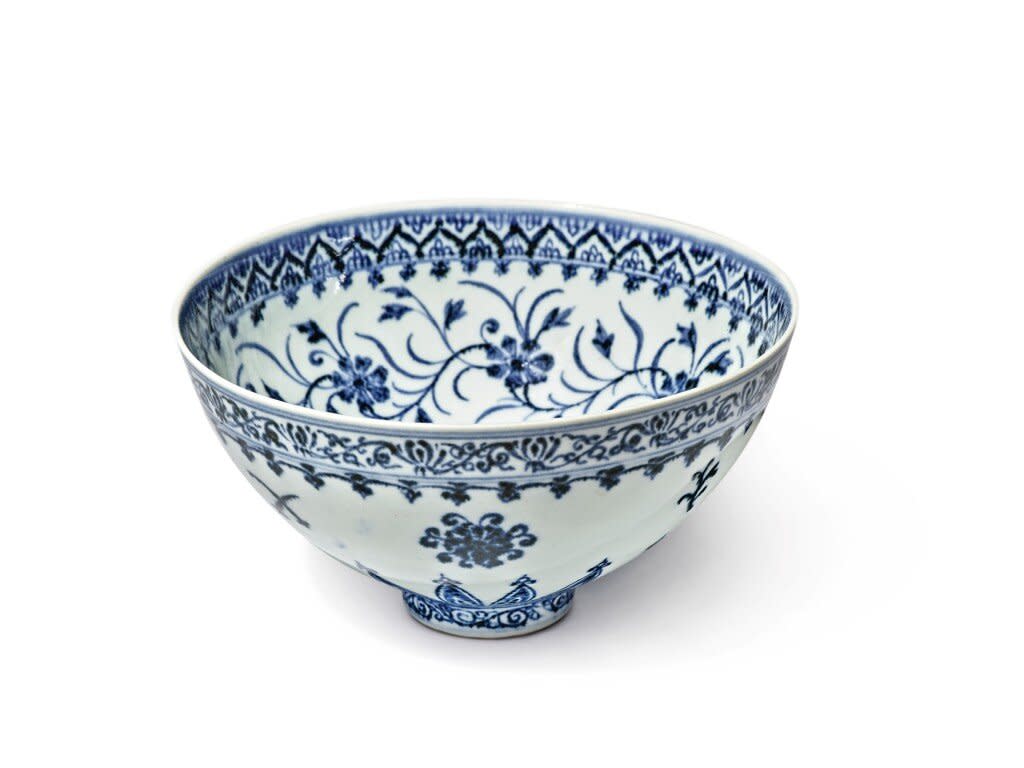The Chinese Artifact Purchased for $35 at a Connecticut Yard Sale Just Sold for $722,000

courtesy of sotheby's
Just about one month ago, a Connecticut man took home the surprise of a lifetime when he bought a bowl at a New Haven yard sale that turned out to be an ancient artifact. Shortly after bringing home the blue-and-white bowl that he purchased for $35, the lucky shopper realized that what he bought was actually a 15th-century Chinese antique. Initial estimates indicated that the artifact was worth anywhere from $300,000 and $500,000, but after being put up for auction by Sotheby's, the piece sold for $722,000, AP reports.
"Today's result for this exceptionally rare floral bowl, dating to the 15th century, epitomizes the incredible, once in a lifetime discovery stories that we dream about as specialists in the Chinese Art field," Angela McAteer, the head of Sotheby's Chinese Works of Art Department, noted in a statement.
Sotheby's says that this antique bowl, which features a silky glaze, is from the 1400s and dates back to the rule of Yongle Emperor (the third ruler of the Ming Dynasty). It was also made for a specific purpose. According to the auction house, the maker created it for the Yongle court. This court introduced the latest porcelain kiln styles in Jingdezhen at the time, and the bowl is known to have been an essential product for the community.
The researchers could recognize the bowl immediately from the time period largely because of its exquisite detail. The floral design includes four lotus, peony, chrysanthemum, and pomegranate blossoms on its exterior in addition to a quatrefoil motif and medallion surrounded by flowers on the inside. McAteer explained that this is the only bowl found in the United States, and five of the other six that have been uncovered can be found in museums worldwide: two at the National Palace Museum in Taipei, Taiwan, two at museums in London, and one in the National Museum of Iran in Tehran.

